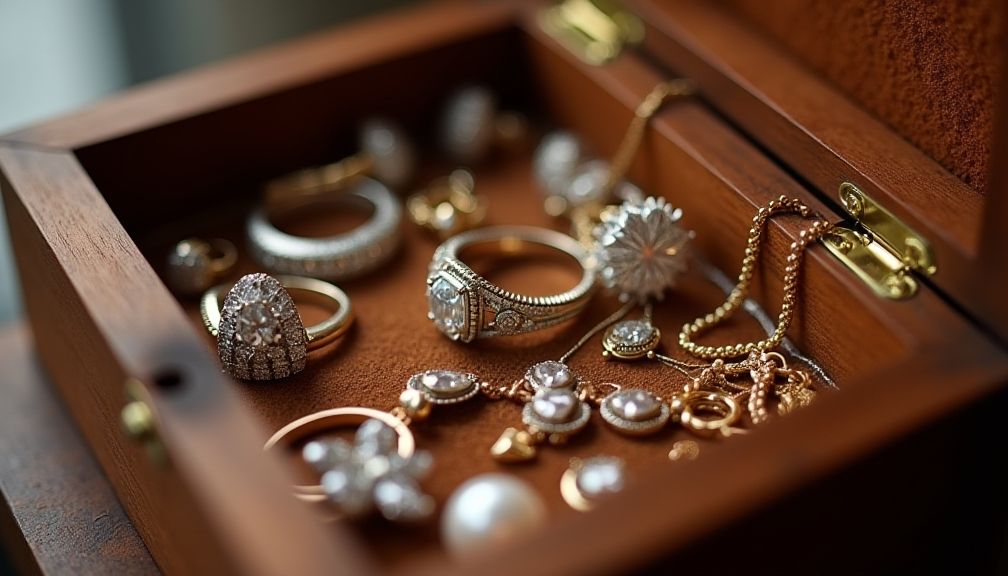Jewelry has long been regarded as more than mere adornment. It often carries sentimental value, representing memories, milestones, and family heirlooms. Given its intrinsic and financial value, it’s crucial to consider the protection of your jewelry collection. This blog will explore the many reasons you should insure your jewelry, highlighting both the emotional and financial aspects of this important decision.
Understanding Jewelry Insurance
Jewelry insurance is a specific type of property insurance that covers loss, theft, or damage to your collection. This specialized coverage can include items such as rings, necklaces, bracelets, and other precious possessions. Understanding the nuances of jewelry insurance is essential for any collector.

1. Protection Against Theft
One of the primary reasons to insure your jewelry collection is to protect it against theft. According to a report from the Federal Bureau of Investigation, millions of thefts occur annually, and jewelry is often a prime target. Insuring your jewelry ensures that if it were to be stolen, you would not suffer a devastating financial loss. With the right policy, you could receive compensation equivalent to the value of your items based on market prices.
2. Coverage for Loss or Damage
Jewelry can easily be lost or damaged, whether at home or in public. It might slip off, break, or suffer from damage due to accidents. Without insurance, the financial burden of repairs or replacement falls solely on you. A suitable insurance policy can cover the costs of replacement or repair, ensuring your collection remains intact without significant expense out of pocket.
3. Financial Security
Insuring your jewelry provides peace of mind—an invaluable form of financial security. Collectors understand that high-value items can substantially impact their finances. By insuring your jewelry, you protect yourself from the potential financial loss associated with unexpected events. This proactive approach ensures continuity, allowing you to enjoy your collection without worrying about its potential loss or damage.
4. Sentimental Value
Many pieces of jewelry come with deep emotional connections. Family heirlooms or gifts from loved ones aren’t merely pieces of metal or stone but symbols of cherished relationships and memories. Insuring these items means safeguarding your intangible connections alongside their tangible worth. Insurance acknowledges not just the item’s market value but its personal significance.
5. Flexible Insurance Options
Jewelry insurance offers various coverage options tailored to meet individual needs. Many insurance providers can adjust your policy based on your collection size, frequency of use, and specific needs. This flexibility allows you to create a customized insurance solution that protects you and your unique collection effectively.
6. Choosing the Right Valuation
In determining the appropriate level of coverage for your jewelry, valuation plays a crucial role. Having an up-to-date appraisal from a reputable jeweler is essential. This professional assessment provides a clear understanding of your pieces’ market value, ensuring your insurance policy appropriately reflects that value. Regular appraisals are key; jewelry’s market value can fluctuate based on various factors, including trends and economic conditions.
Further Reading:
7. The Claims Process
While understanding the claims process might seem daunting, it is vital to be informed about how it works. In case of loss or damage, policyholders must file a claim, providing documentation and proof of value. Knowing your policy’s specifics, coverage limits, and the claims procedure in advance will simplify potential future situations. A well-structured claims process makes a significant difference in stressful scenarios.
8. Insuring a Growing Collection
If you are an avid collector, your jewelry collection is likely to grow over time. With this growth comes the necessity for ongoing insurance updates. As you purchase new items, it’s essential to revisit your policy to ensure that all pieces are adequately covered. Review your plan regularly with your insurance provider to include newly acquired jewelry, as forgetting can leave these valuable additions susceptible to loss.
9. Understand Policy Limitations
Every insurance policy has limitations and exclusions. It’s crucial to read the fine print before committing. Some policies may have caps on specific types of claims or exclude certain scenarios. Having a clear understanding of these limitations ensures you are not caught off guard should you need to file a claim.

10. Fulfilling Legal Obligations
For those with large or valuable collections, insurance may also serve a legal purpose. Some estate planning strategies depend on insurance policies to provide liquidity for estate taxes, ensuring that heirs can inherit assets without financial burden. This aspect highlights the functional aspect of jewelry insurance, reinforcing its role as an essential financial tool.
Conclusion
Insuring your jewelry collection is not merely a matter of financial prudence; it’s about preserving your memories and the emotional significance behind each piece. From protection against theft and damage to ensuring that financial burdens remain manageable, jewelry insurance proves vital for anyone who values their collection. With the proper coverage, you can continue to reveal the beauty and story each piece carries, knowing you’re protected should the unexpected occur. In a world full of uncertainties, insurance provides a necessary layer of security for your treasured belongings. Don’t wait for something to happen; take proactive steps to safeguard your jewelry collection today.








